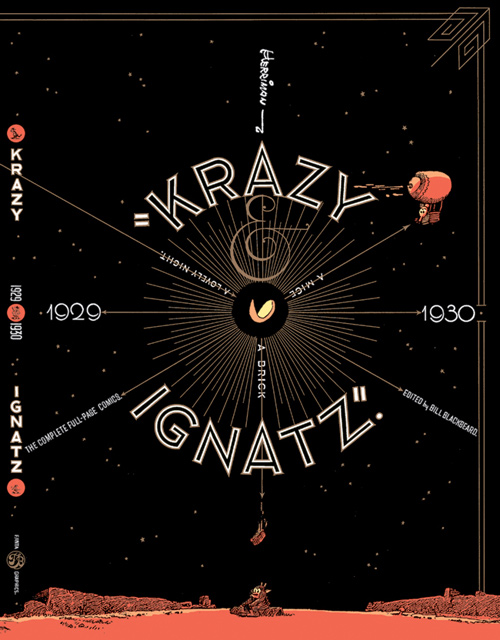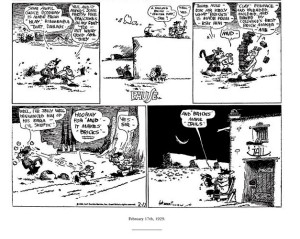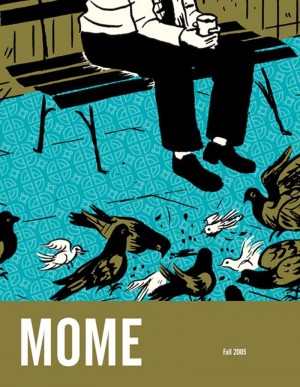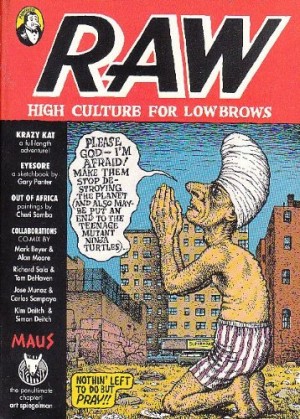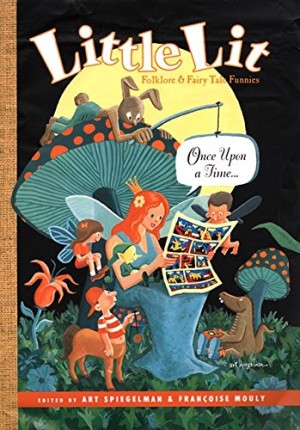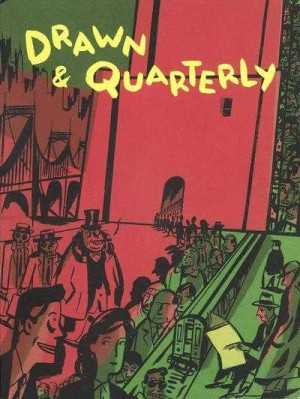Review by Woodrow Phoenix
Volume six of the complete Krazy Kat Sunday pages by George Herriman finds Herriman released from the restrictive three-tier format imposed on him, which allowed papers to change the layout of his cartoon if they chose to reformat it into two daily-sized rows.
This volume is introduced with an essay by Ben Schwartz about Hearst and Herriman’s relationship to the comedy styles of their times, plus there is more biographical information from editor Bill Blackbeard, with rare Herriman art for a variety of publications including Vanity Fair.
For four years, Herriman’s powers of invention were stifled by the grid he was forced to use for his Sunday pages, but regardless of the layouts, his humour was unaffected and the funny dialogue, ridiculous slapstick situations and poetic interludes are no less powerful whatever the design. After September 1929 he was once again able to design his pages as he wished, and the second half of this volume shows him bringing back the more complex, unusual and surprising compositions that he created so brilliantly. There’s a perceptible lift in the quality of the Sunday pages after this point. Krazy still loves Ignatz, Offisa Pupp still secretly loves Krazy, and Ignatz still desires nothing more than to fling a daily brick at the kat’s head, and the canvas for their activities expands as they do. Each character has no idea about the others’ true motivations, and this triangle is continually rewoven into new variations of loopiness and silliness which rise to heights of invention with hilarious effect.
The usual “Ignatz Mouse Debaffler Page” at the end of the book explains some of the jokes, and also goes into detail about the formatting of the Sunday pages. A final bonus is a reproduction of some sheet music: the Krazy Kat Rag for ragtime piano, written in 1911. This volume is not as packed with extras as some of the others, but there’s still a huge amount to discover in this tremendous collection of marvellous work by one of the all-time greats.
